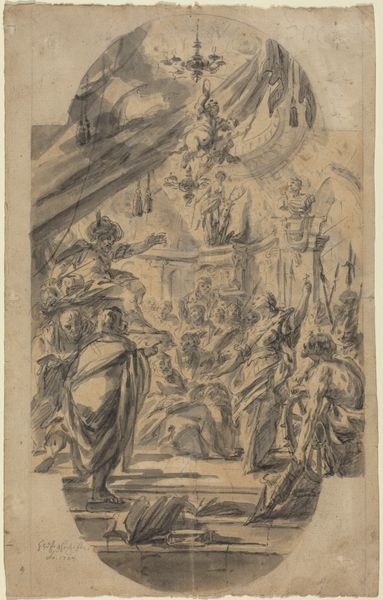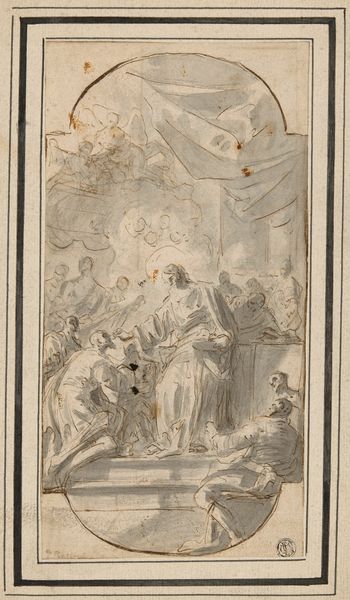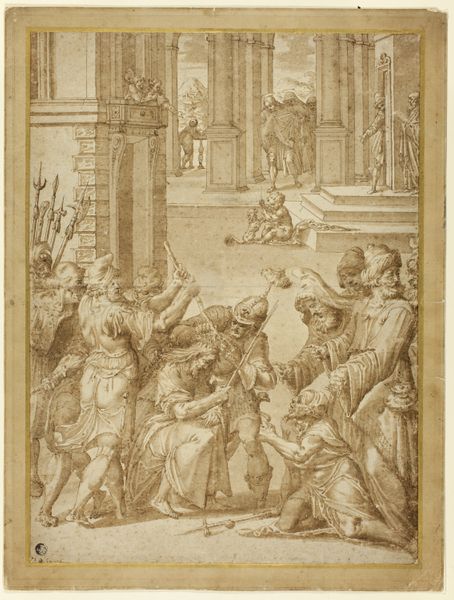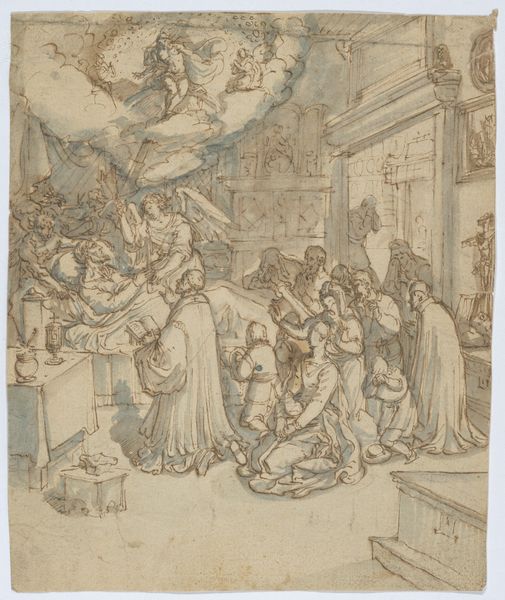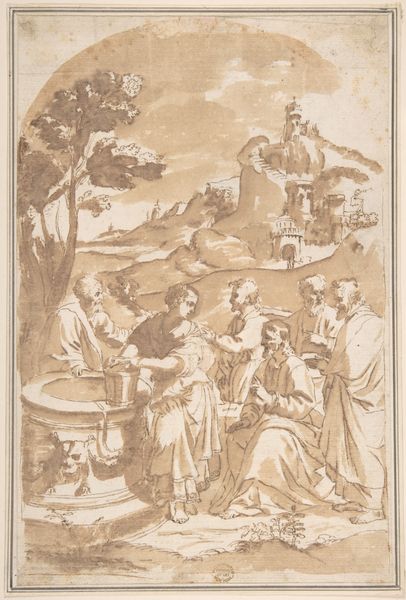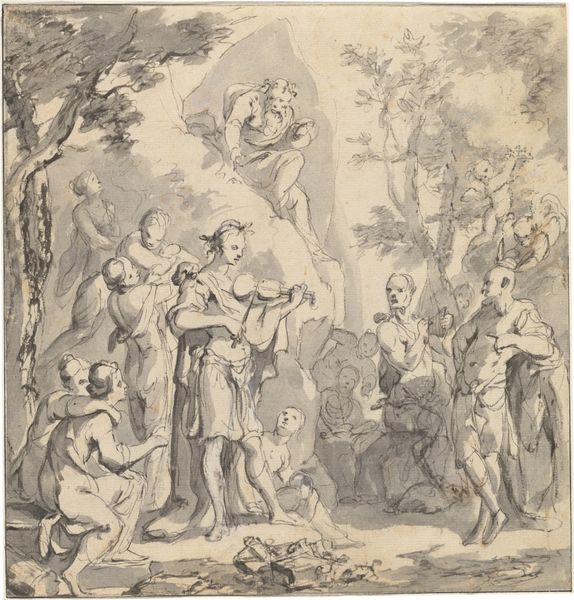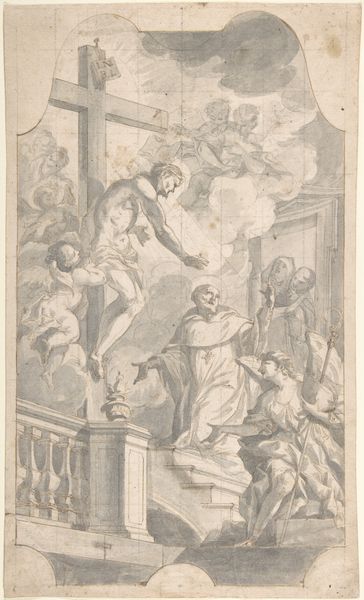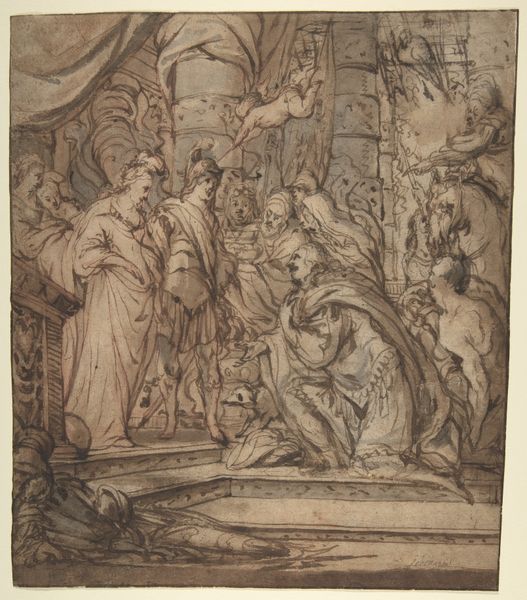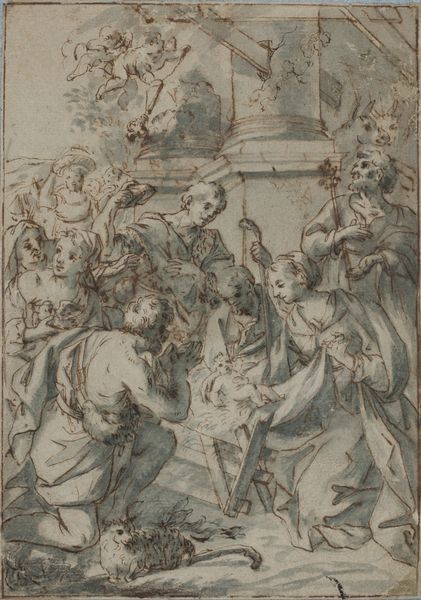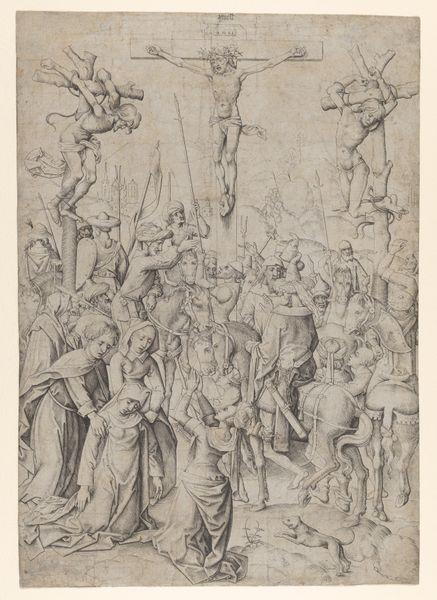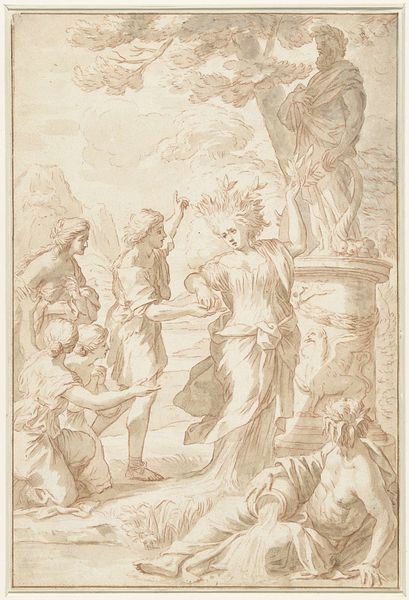
Virgin and Child in Glory with Angels and Saints 1700 - 1800
0:00
0:00
drawing, print, ink, pen
#
portrait
#
drawing
#
baroque
#
ink painting
# print
#
pencil sketch
#
etching
#
figuration
#
11_renaissance
#
ink
#
pen
#
watercolor
#
angel
Dimensions: 15-5/8 x 10-15/16 in. (39.7 x 27.8 cm)
Copyright: Public Domain
Curator: Welcome. Today, we're looking at an ink and watercolor drawing from sometime in the 18th century, titled "Virgin and Child in Glory with Angels and Saints". The artist is listed as Anonymous. Editor: Well, immediately the grey washes lend this a celestial feel, literally cloudlike. It's very dynamic. It leads my eye upward. Curator: Indeed. This piece can be viewed as a visual representation of the socio-political power of the church at the time. The figures represent an intersection of heavenly authority, innocence, and sainthood. Note the deliberate placement of each figure; their gestures communicate deference to the Virgin and Child. It emphasizes hierarchical structure reflective of societal norms and gendered expectations, presenting the virgin as the mother who can mediate with divinity. Editor: Structurally, there's a very clear division in the composition: a structured architecture on the right side juxtaposed against fluid forms on the left, the holy figures rising almost out of the architecture itself. Do you see a tension between order and transcendence? It suggests that holiness can transcend temporal, earthly boundaries. Curator: I concur. It also touches on power dynamics; access and mediation by saints are only granted in line with their obedience, chastity, and class. We are drawn into a spectacle of devotion which mirrors society back at itself, especially considering how devotional prints would proliferate into the hands of the middle and lower classes, providing access to this visual. Editor: Yes, the architectural structure really contrasts with the sweeping clouds. Looking at the washes, it is not just structural, but lends atmosphere too. What seems at first a two tone drawing uses hue, and weight of ink, to depict shadow, depth, drama. And also, look closer – these figures have solidity. Curator: Absolutely. The reproduction of religious art during this time not only aimed at piety but furthered a particular sociopolitical ideology. That is why it's crucial to interpret art like this within its historical context. The seemingly ethereal representation served to uphold and normalize a concrete social order. Editor: From a formal perspective, I'd argue that the work is also successful simply for the illusion of depth it creates using very economic means. Curator: It does give you much to think about. Thank you for sharing your thoughts! Editor: Likewise!
Comments
No comments
Be the first to comment and join the conversation on the ultimate creative platform.
